[SSI, Atari 8-bits]
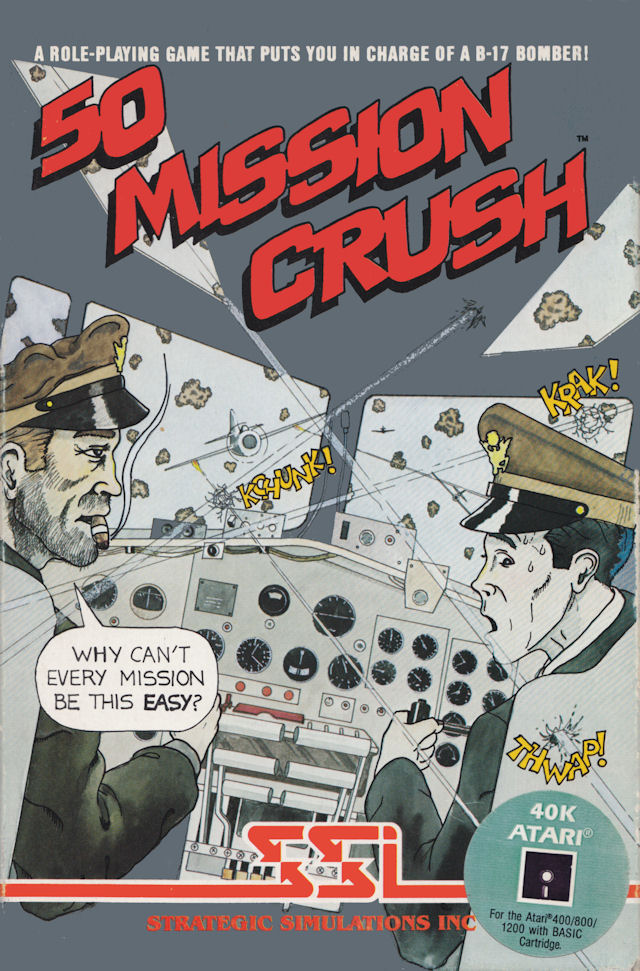
I feel I have played too many wargames recently, and let’s be honest these are pretty niche, so I am going to broaden my audience by playing a bona fide role-playing game: 50 Mission Crush. Why didn’t anyone think about role-playing a B-17 pilot? That seems so much more exciting than wizards, rogues and barbarians!
As with all RPGs, I need a long-term goal, my Amulet of Yendor. This is going to be the 50 Mission Crush cap, described this way in the manual:
A “fifty mission crush” is an Army Air Corps, or Air Force, service cap that has the stiffening ring removed, and is worn crushed and battered. This cap is obviously out of uniform, however steeped in tradition. This tradition was started by the 8th Air force flying personnel as a mark that separates the fledgling from the battle hardened survivor of 25+ combat missions. This mangled cap was frowned upon, but tolerated for those who earned the right to wear it.
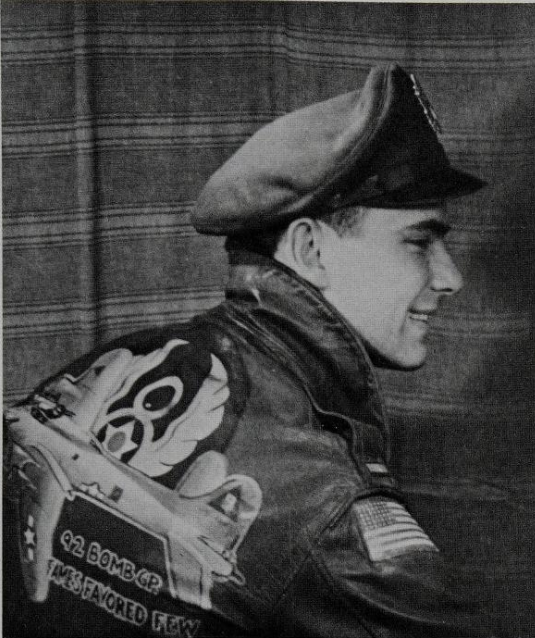
I am not sure why they call it a 50 Mission Crush when it was worn by the veteran of 25+ combat missions (at which point you could retire), but the game requires you to do 50 missions, so 50 missions it is.
As with every role-playing game, I have a party, called “a crew” in-universe. As usual, I asked my commenters to provide their name, so here is my first party.
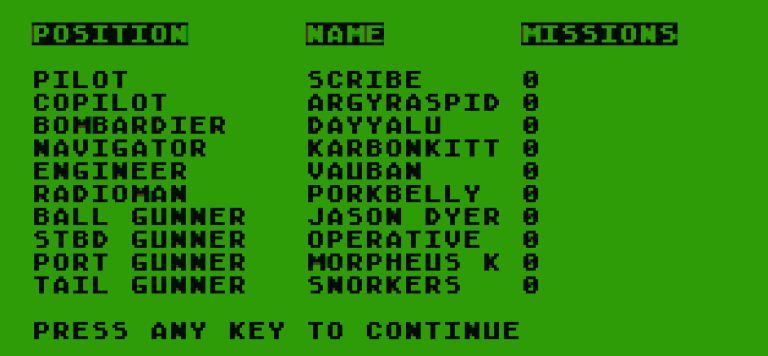
I hope they’ll get to wear the MacGuffin cap as well!
Without further ado, let’s start with the first mission.
Mission 1: Abbeville
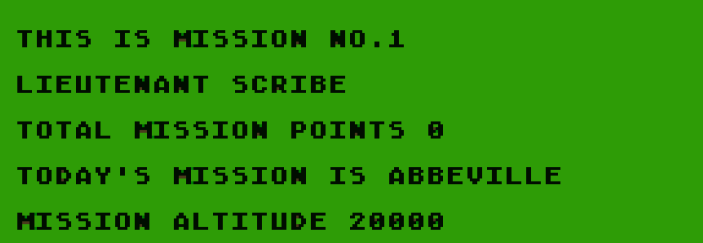
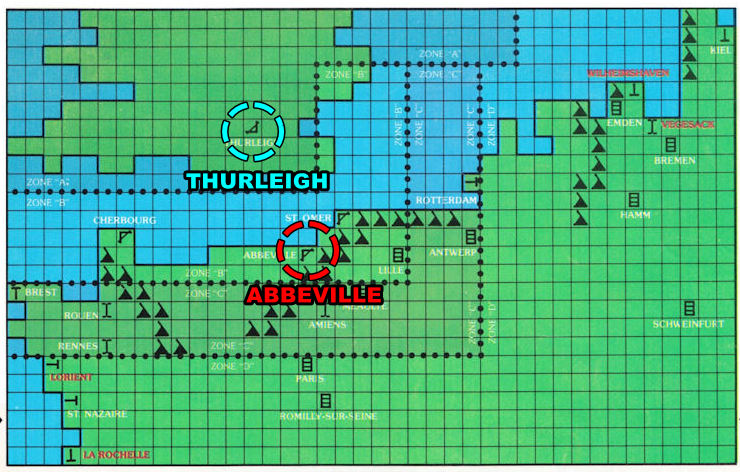
The first mission is a strike on Abbeville, a city on the coast just on the other side of the Channel. I did not even know that the Americans bombed it, as the city is mostly known, as far as WWII is concerned, for the Abbeville counter-attack and the French-committed Abbeville massacre. After some research, I found out that it was the second city hit by the US strategic forces on the 19th of August 1942, when 24 B-17S hit some plane factories – learn something new every game I guess.
The historical raid was also a safe way to learn how to operate strategic bombers above enemy territory, and similarly, this is pretty much a tutorial mission for me. Before taking off, I need to set my fuel level (the more fuel I carry, the fewer bombs I bring) and whether I overload my plane with even more bombs, at the risk of finding the airstrip slightly too short when taking off.

And off we go with my B-17, the Impatient Virgin.

I start over Thurleigh at an altitude of 5 000 feet. Each “turn”, I can do one “action” and then move. The actions are :
- Gain altitude (by 5000 feet increments),
- Lose altitude (by 5000 feet increments),
- Use a fire extinguisher,
- Drop my bombs (“salvo”),
- Leave my formation (“abort”),
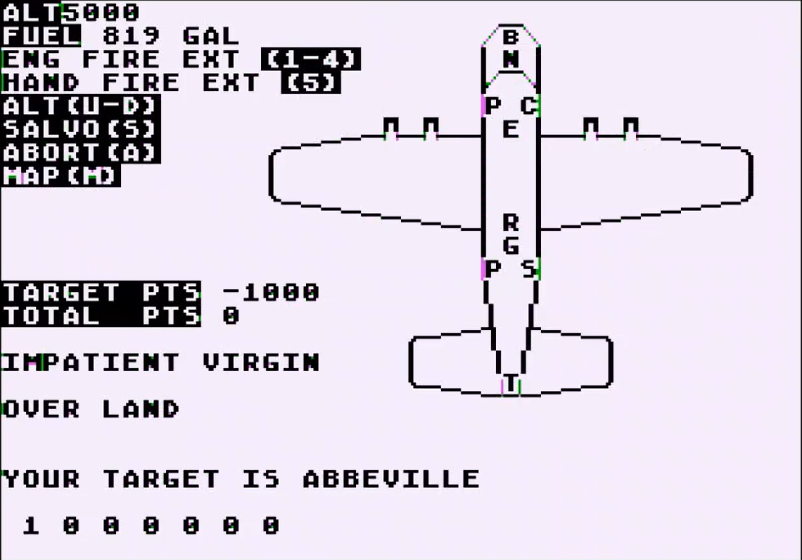
That’s not a lot of options, particularly because at the moment I am not in formation yet, I don’t have any fire on board and I harbour no ill feelings for the fine people of Thurleigh. I climb to the mission altitude of 20 000 feet and join my formation above the channel. This turns the small blinking dot representing my plane on the mission map into a large blinking dot:
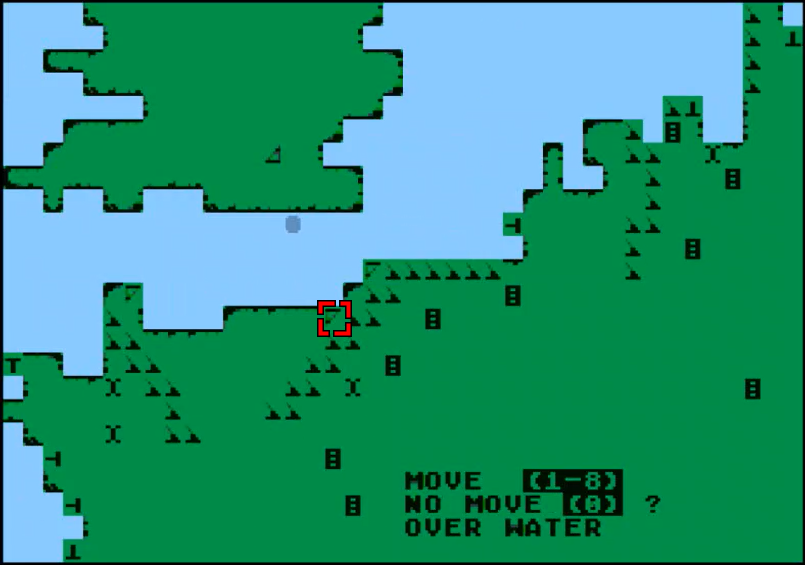
Being in formation protects against enemy air attacks, which does not stop a FW-190 from trying. It is received by Vauban in the top turret manning a twin 50-cal. machine-gun. Vauban misses, but the German plane breaks off after inflicting minor damage to my plane.
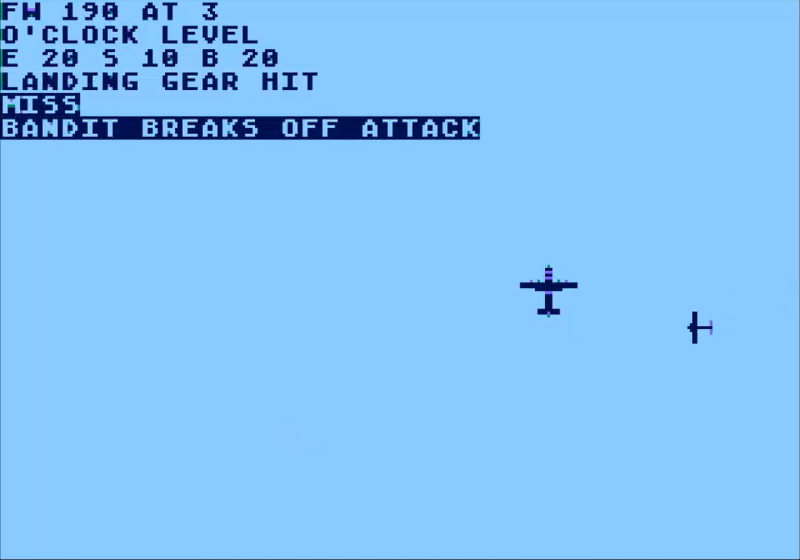
We finally arrive above Abbeville. The weather is clear, so the flak is active:
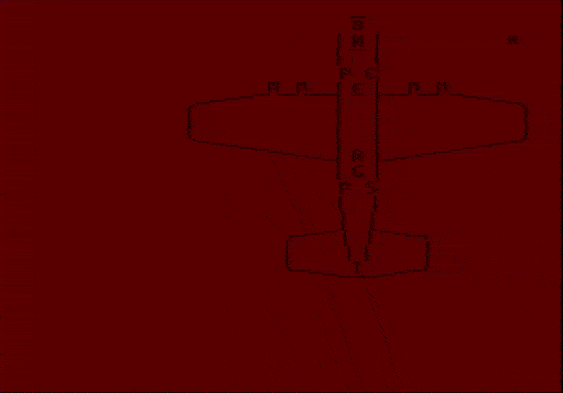
Vauban and Jason’s heaters are out, which at 20 000 feet can be a bit problematic. Before addressing the issue, I drop my bombs (no fancy effects), and earn 1000 points. Did I hit the aircraft factory or downtown Abbeville? I don’t know! All I know is that the -1000 points of the mission are converted to +1000 points the moment the bombs leave my plane while I am approximately above the target.
I turn over to return to England and I need to make the first real choice of the mission: I can either stay in formation, but at 20 000 feet without heating I may lose important bits of Vauban and Jason to frostbite, or I can leave my formation and dive to 5 000 feet, but lose the protection of my squadron. I choose the latter, because not enough commenters registered to afford to lose two crewmen in the first mission!
A Me-110 tries to jump on the defenceless B-17 while I am in the middle of the channel but a short burst from Snorkers manning the tailguns is enough to convince it to come back another day.
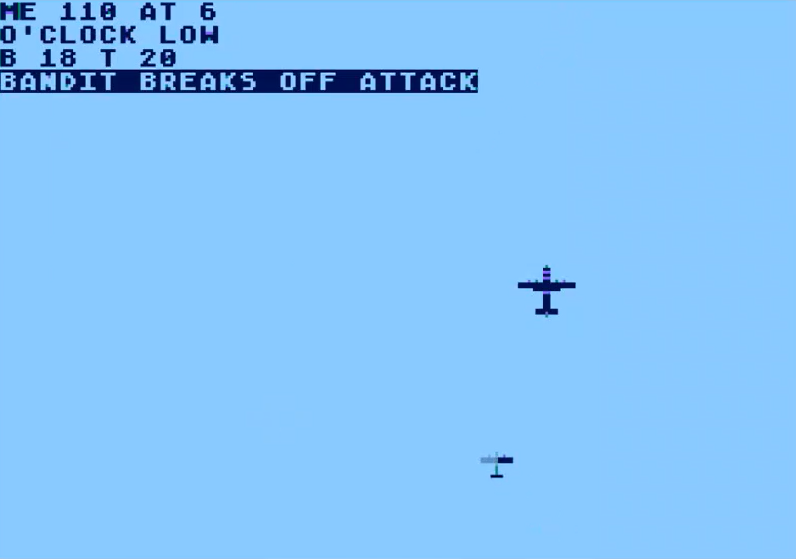
And on this last bit of action we return to base. Mission accomplished.
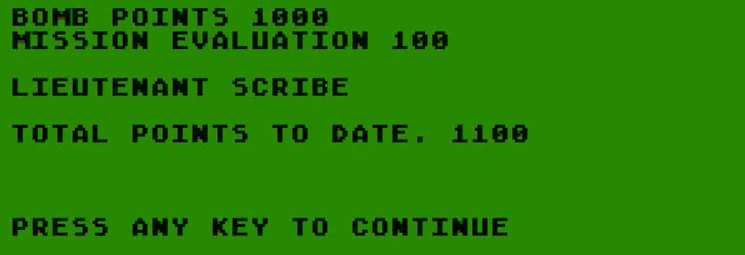
Mission 2: Lille

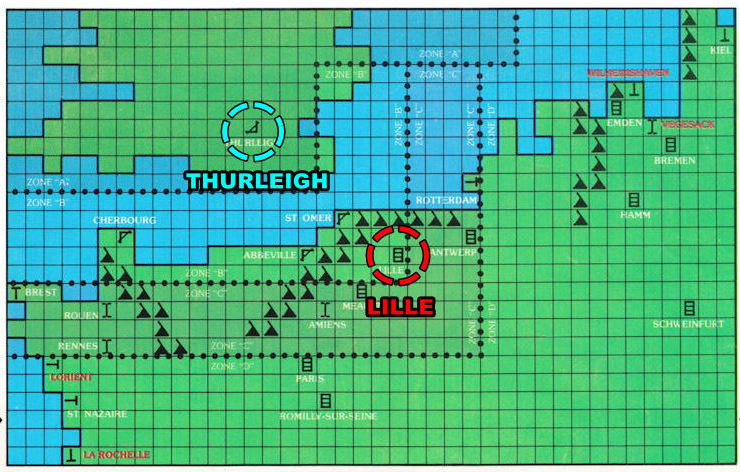
The second mission for the Impatient Virgin is to bomb Lille. This might surprise some of my French readers, but back in 1942 there were things to bomb in Lille: metalworks factories, train workshops and some chemical factories.
The mission is particularly calm, with only a brief attempt by a lone Me-110 near Saint-Omer, quickly fended off by Vauban. When we arrive above Lille, the target is hidden below clouds:
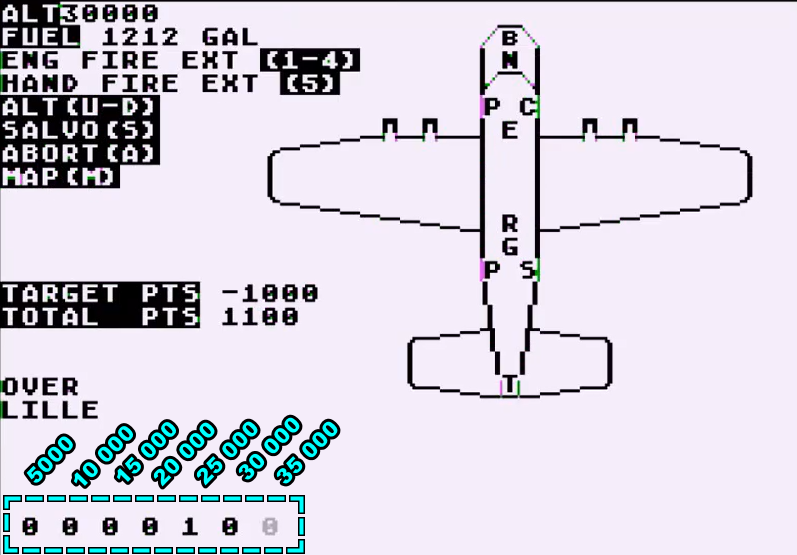
The manual indicates “if you have clouds between you and the ground, flak will not fire and you will be unable to hit your target“. Does it prevent me from sending bombs? Of course not! Do I hit chemical factories and metalworks or corons and belfries? I don’t know, but probably not something useful for the German war effort because the -1000 only gets converted to 0 points this time. I promise I will make an effort next time.
The return is eventless and I land with a lot of excess fuel, but only 60 points for the mission.
Mission 6: Romilly-sur-Seine

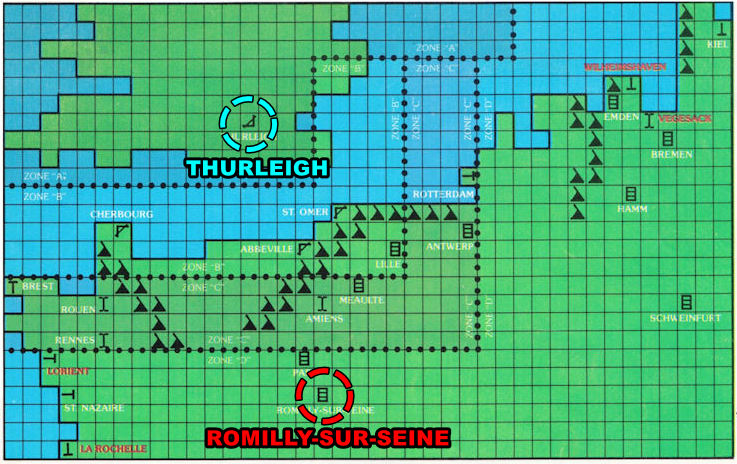
After an eventless round trip to Rotterdam and two short raids on Cherbourg, I receive my first target inside the continent: Romilly-sur-Seine. I had to look up the city in Wikipedia, and let me tell you that I am OK with dying on a mission to bomb Rotterdam, Cherbourg, Abbeville and even Lille, but I don’t want to be the pilot who dies on a mission against Romilly-sur-Seine. It is not even on the Seine, for Christ’s sake.
I take a generous allotment of fuel and not so many bombs (bombload: 40%). Romilly-Sur-Seine is in zone D, which means a lot of German planes and no fighter escort. The weather is also perfectly clear, so no hiding in the clouds either.
I make a small detour to avoid the German heavy flak concentration, but maybe I should not have: the main threat is the German Luftwaffe. On my way to Romilly, my plane is attacked 5 times by all sorts of fighters. Most attacks are quickly discouraged by my gunners (Vauban in the top turret, Jason in the ball turret and Snorkers in the tail), but one of the German pilots manages to pierce my fuel tank as I pass Paris. I don’t care: I brought so much fuel I continue the mission.
Just as I approach Romilly, I am attacked by 3 planes each immediately after the previous one. The first of them, a 109 coming from starboard, badly wounds Morpheus Kitami as he was manning the port gun.
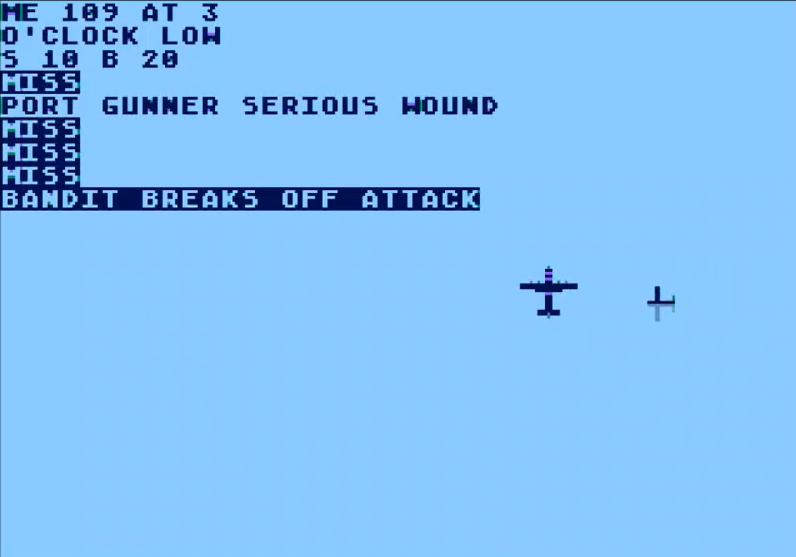
I continue the mission and drop my payload on Romily. Flashes of colours ensue:
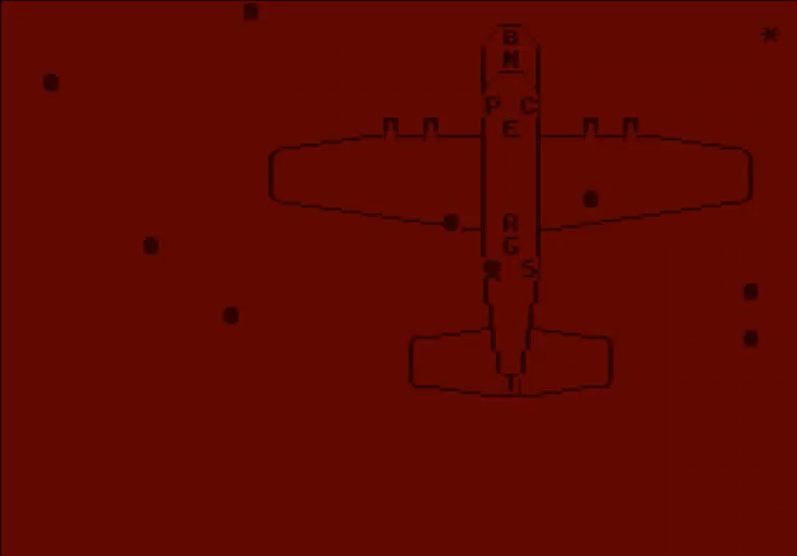
The return is another series of air attacks, and above the Channel the last German plane manages to approach and shoots Morpheus Kitami dead!
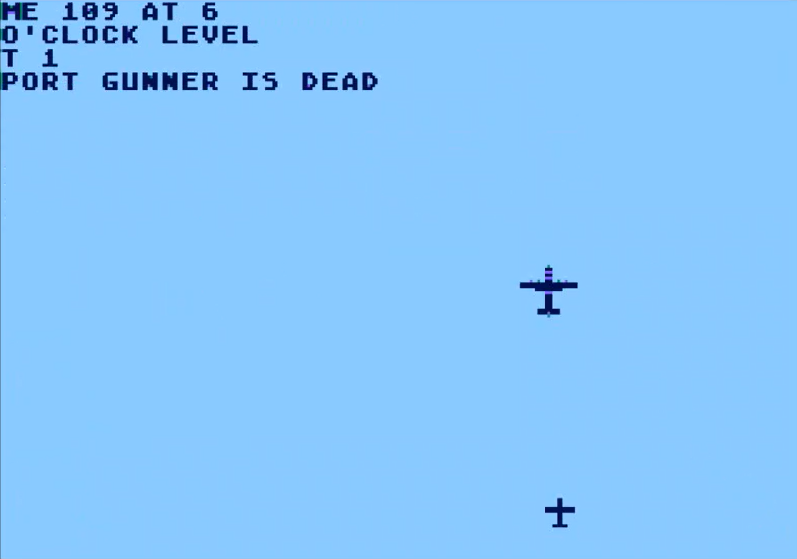
No one seemed to care when I landed – Morpheus Kitami (or “the port gunner”) was never mentioned again.
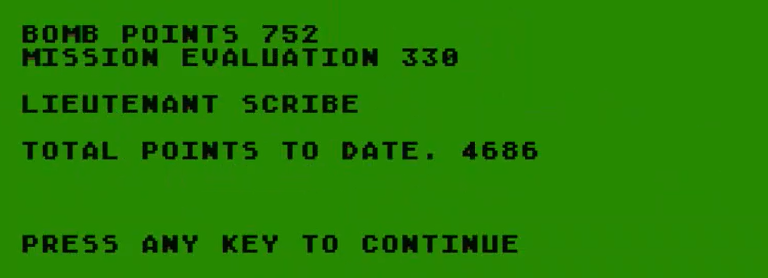
Mission 7: Wilhemshaven
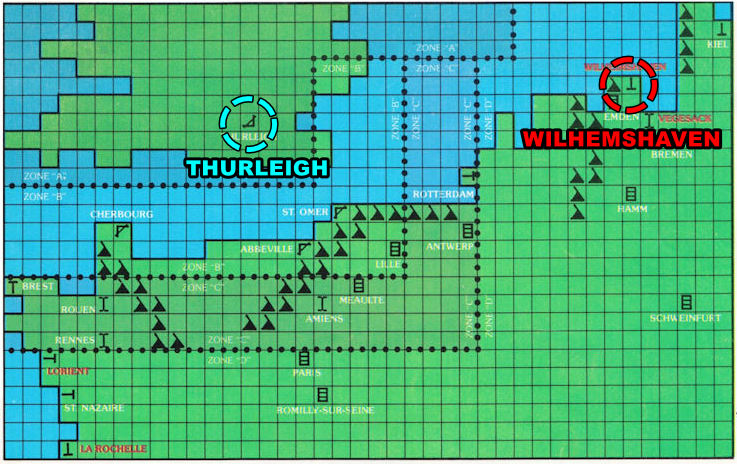
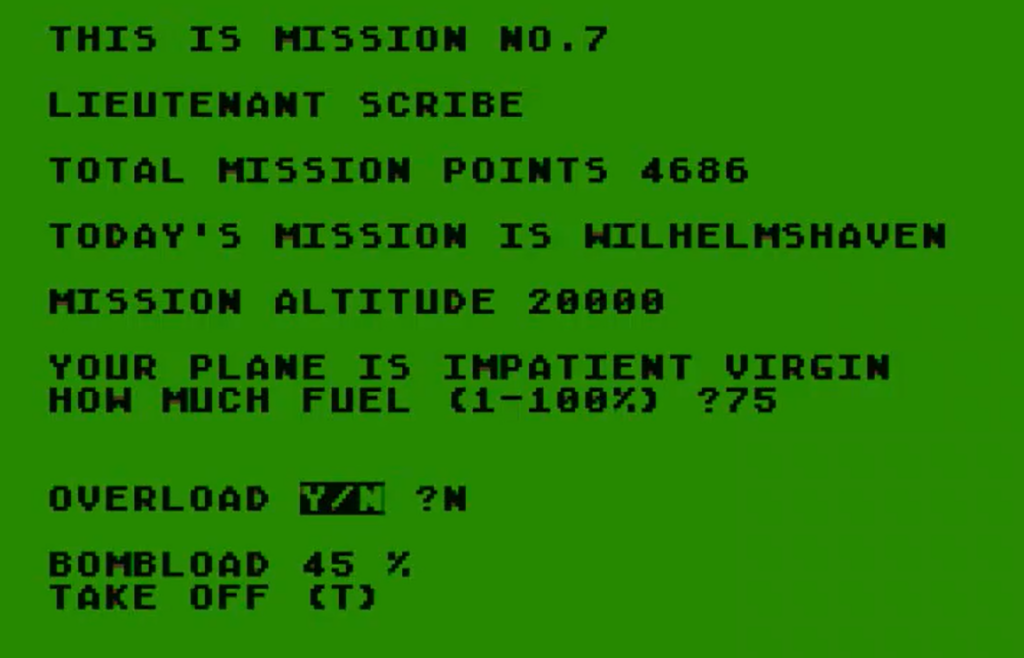
Hey! My first mission in Germany! It is against the submarine pens of Wilhemshaven. No cleric nor resurrect in this universe, so I replaced the late Morpheus Kitami with Ahab as a port gunner:
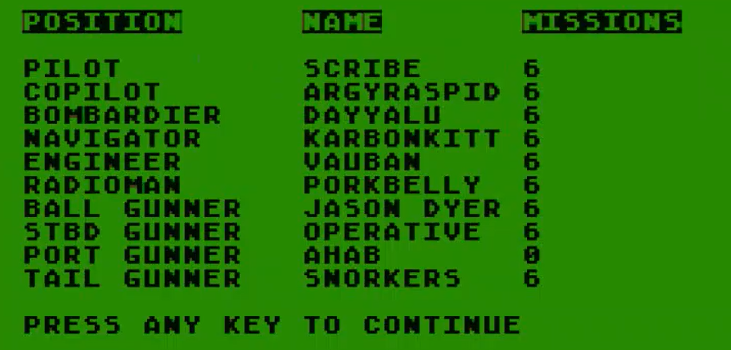
As we know, we are playing an RPG and you can’t have an RPG without equipment upgrades. And I received an upgrade indeed – the only upgrade available in this game:

This is not totally useless, but this is not a game-changer either: the 30 cal were single-guns, and since I can only use one gun by round of combat I prefer to use the twin 50 cal. I already have. The upgrade is only going to be useful if I am out of ammunition or if an enemy plane comes from the front at the same altitude as I am.

The mission to Wilhemshaven in itself is eventless. The Northern route keeps me in the safe area for more than half of the trip, and heavy clouds protect the plane for the rest of it – they clear just as I arrive above Wilhemshaven. The submarine pens are defended by heavy flak, and just as I drop my bombs, navigator Karbon Kitty is badly wounded. I return in all haste, passing through a gauntlet of German fighters, and return home in one piece.
The mission is a stunning success, and Karbon Kitty survived the ordeal, but that’s the end of his career in the Air Force – at least as a flyer. He is replaced as a navigator by Gubisson.

Mission 10: Rouen
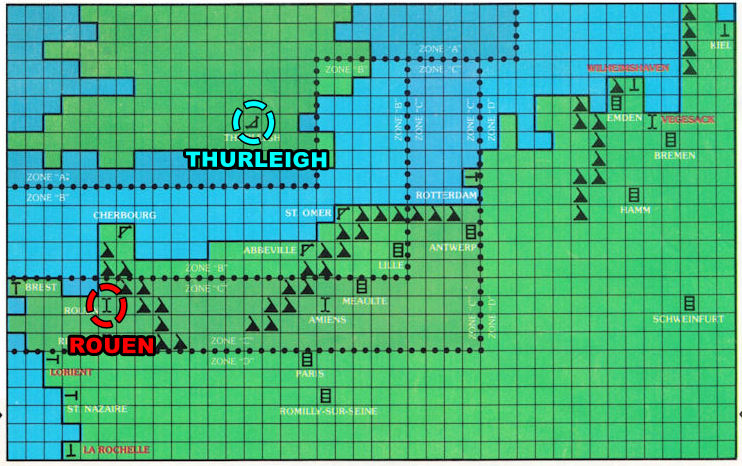
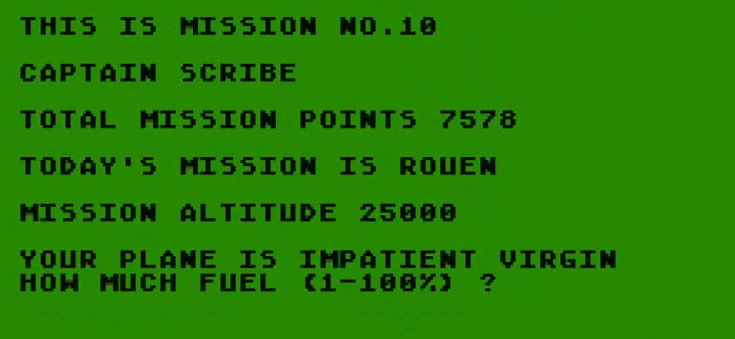
Mission 10’s target is Rouen. After a mission against Rennes and another against La Rochelle, this seems like a milk run.
The mission toward La Rochelle was quite stressful as the plane got attacked without respite due to the clear weather. It had its upside: for the first time an enemy plane was destroyed and not just forced to break off: the first kill (a 109) was Jason manning the ball guns, and the second one (a 110) Snorkers shooting from the tail gun. I still have most of my starting crew.
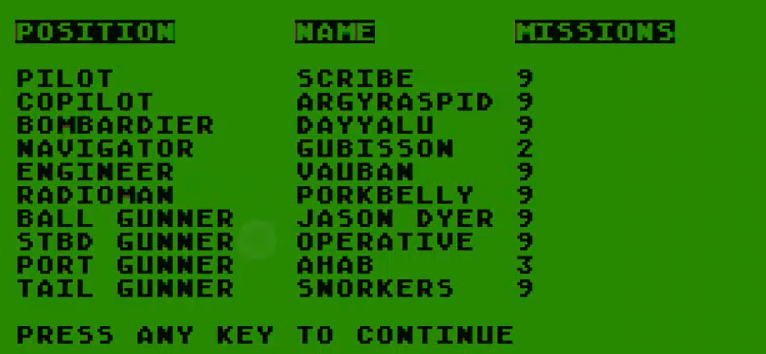
I passed two milestones with the La Rochelle mission. The first one was a promotion to Captain:

The second is more personal: I am fed up with the game which does not offer me anything new when I fly a few missions, and I start to be particularly cocky in the hope of ending my career early!
Back to the Rouen. The usual interlopers attack me, and Snorkers destroys 2 more of them coming from the back, though not before letting them destroy an engine:
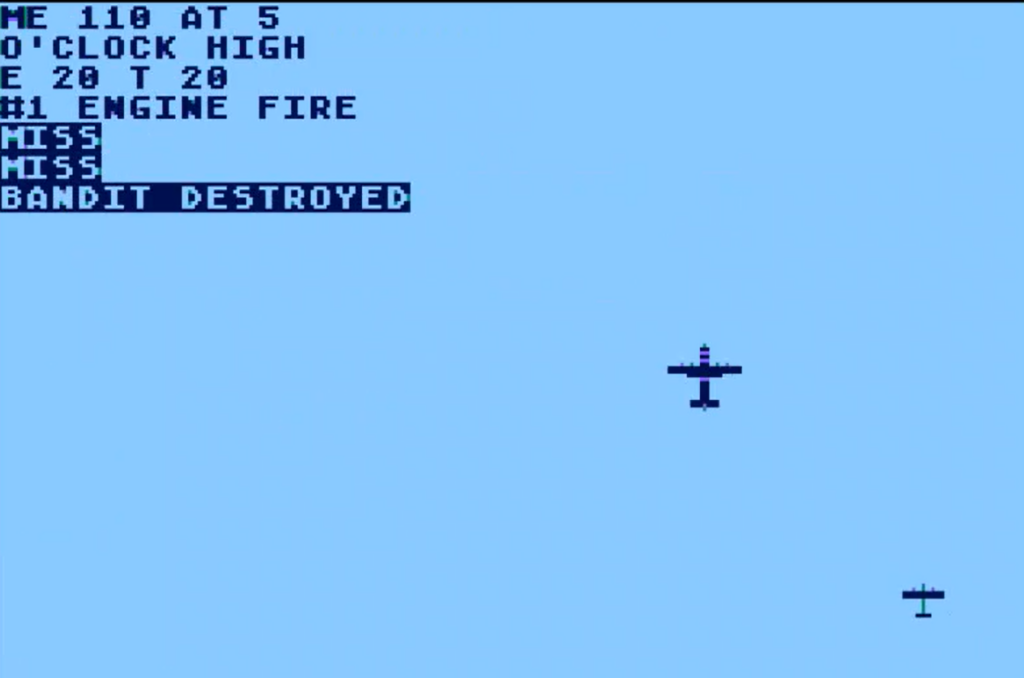
I am forced to use an extinguisher (the game is locked until I do), so that’s another decision I don’t get to make in this game).
I bomb Rouen, get damaged some more by the German flak, and then return to Thurleigh:
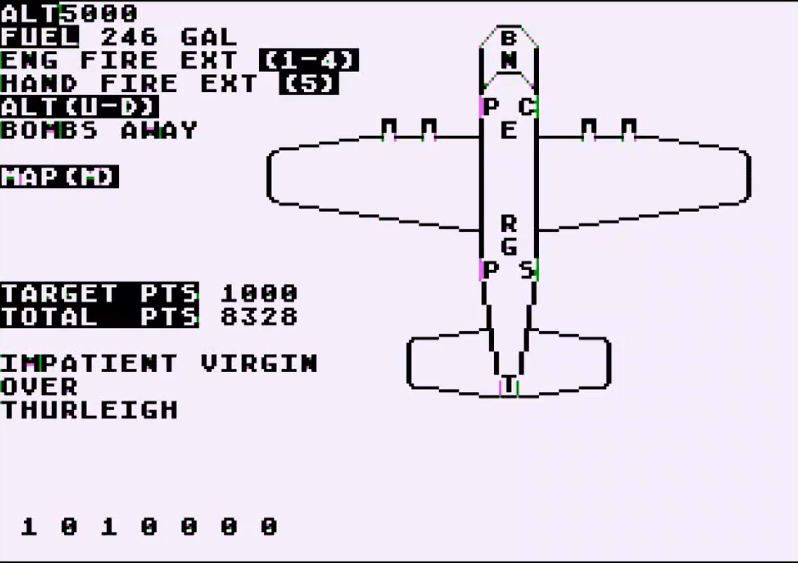
That’s when I forget that over Thurleigh, fog at 5000 feet makes landing difficult. And then this happens:
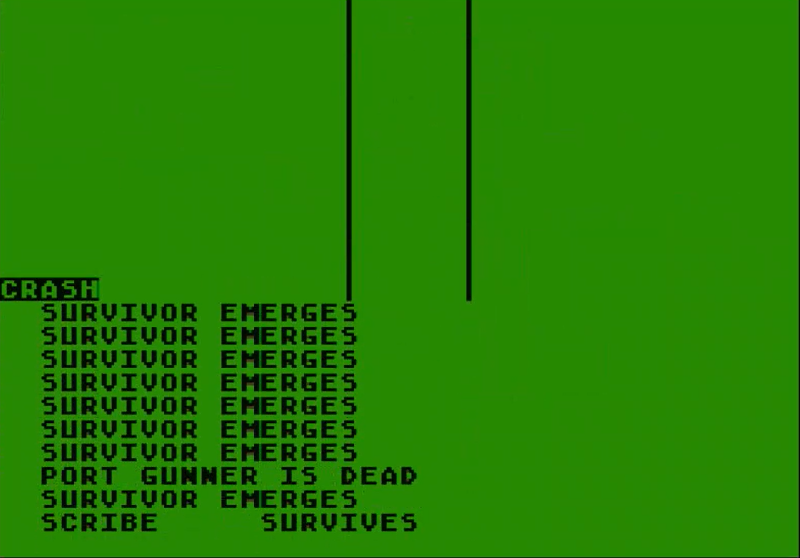
Crash during landing. Ahab is killed, the rest of the crew survives, and the career of the Impatient Virgin ends.
Mission 23: Bremen
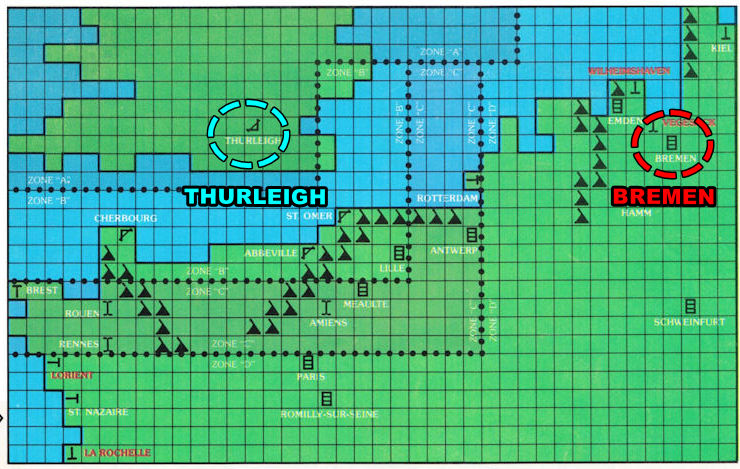
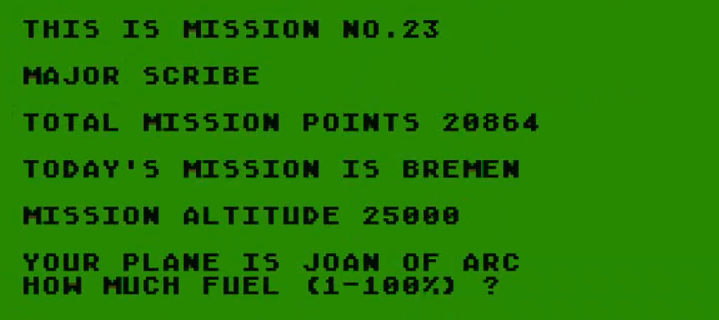
I skipped ahead a lot, but then not so much happened. The Impatient Virgin was replaced by the Banshee, but the Banshee was lost only three missions later, after another crash at landing that killed our bombardier Dayyalu. Snorkers had been badly wounded one mission earlier and sent back home. As for me, I was promoted to Major after my 17th mission over Meaulte.
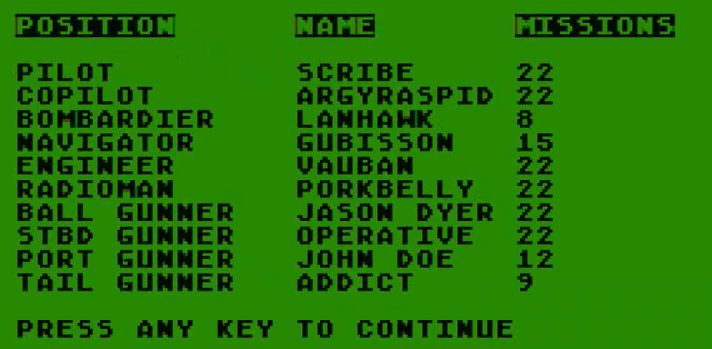
I am now flying the Joan of Arc and my mission will bring us to Bremen, one of the most distant potential targets, Long-distance means lots of fuel, lot of fuel means few bombs, so as is now usual with distant missions I overload my plane. I am confident that I am competent enough now to take off with more bombs than my instructor said was wise but what does he know?
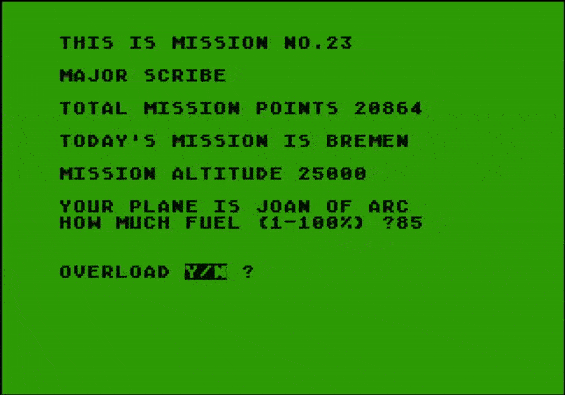
Damn. We lost the copilot Argyraspide and the port gunner we did not care about – I was out of names to replace Ahab. We also lose 1000 points and a plane with a cool name.
Mission 38: Kiel
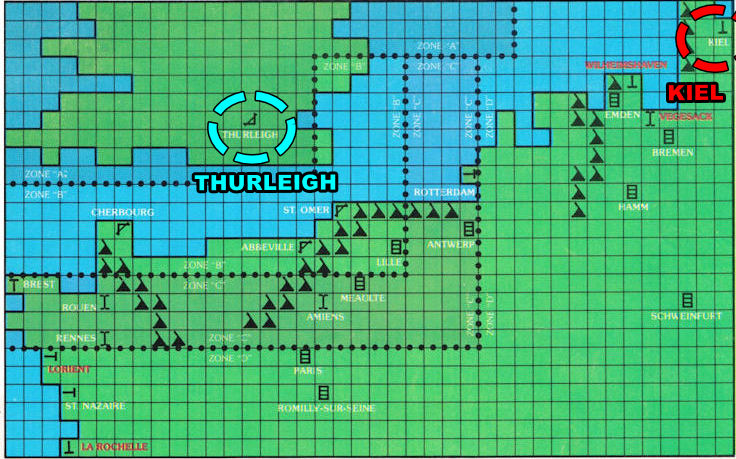
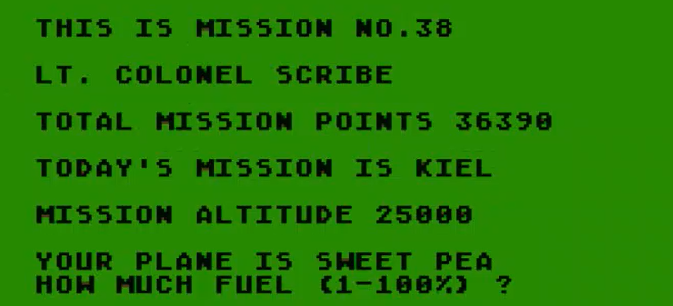
We skip to mission 38. There were a few milk run missions (mostly to Rouen) in the late 20s, but the missions are getting harder, with most missions in the German fighters-rich “Zone D”. Nonetheless, since the Bremen disaster, I managed to bring the Sweet Pea – my new plane – home every time. I even got promoted to Lt-Colonel and received the Legion of Merit. I only lost 4 more crewmen, but none of them were veterans from mission 1.
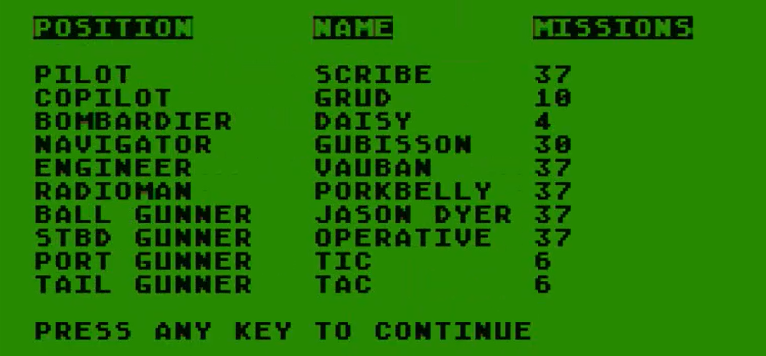
The mission starts classically enough: I join my group at 25 000 feet and head East. Unfortunately, shortly before the wall of Flak defence just West of Kiel, the oxygen is hit. I need to leave my group and dive to 10 000 feet (15 000 would have been enough but I did not double-check the manual), where I am alone, and a perfect target for the flak.
I pass a flak barrage with some damage and reach Kiel. In 50 Mission Crush, you are on the receiving end of flak each turn you end above a city. I receive a first salvo upon arriving, which triggers a fire. It takes me one more turn to put off a fire, with more flak, this time with more long-term effects. I finally drop my bombs, receive more damage, and try to limp back home.
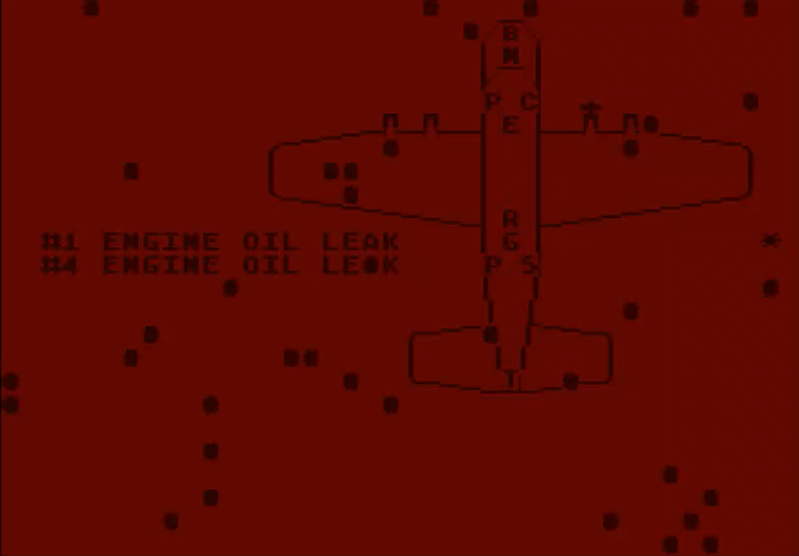
Of course, with the two oil leaks, two engines eventually stop. I don’t have any escorts and the Germans have a field day attacking: I am slow, and soon out of ammo. Eventually, a Me-109 destroys a third engine, and my plane crashes:
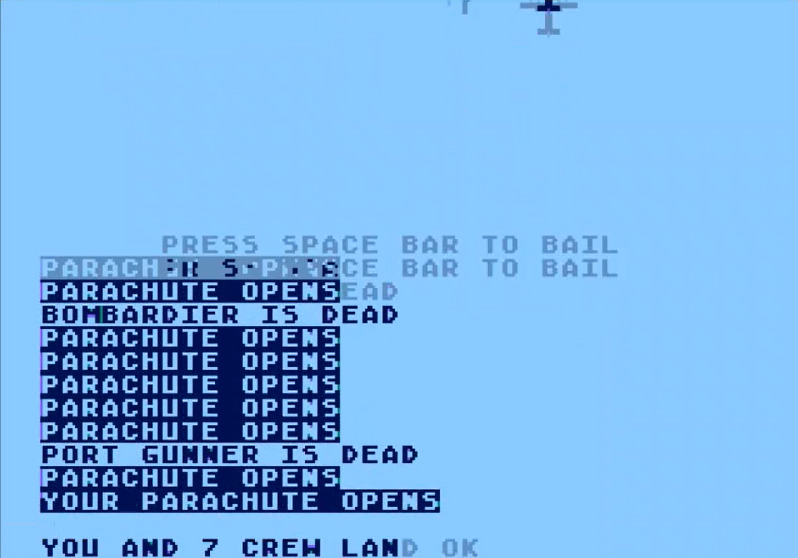
I am lucky! No one I cared about died, and a rescue craft immediately finds us. Looking forward to meeting my new (and fifth) plane – the Sun of Fury.
Mission 45: Bremen

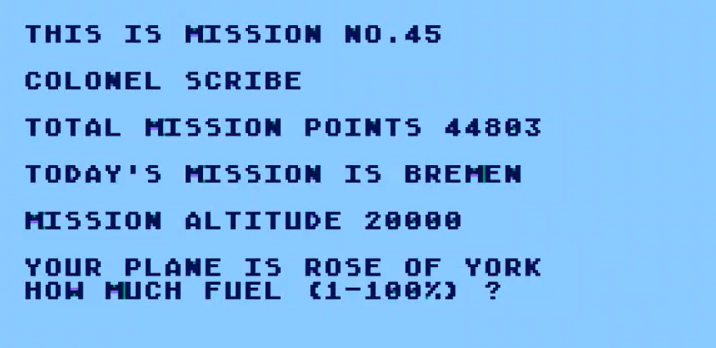
Well, the Sun of Fury did not last long. During a mission to Schweinfurt, I got two engines feathered and the copilot out of action. I aborted the mission and tried to land on Thurleigh, but it did not go well, so my new plane is the Rose of York. I still got promoted to Colonel.
Targets are now always in Zone D, and I count myself lucky when it is not in Germany. German fighters are aggressive, and I often face 5 in a row in Zone D. Luckily, I still have my veterans: Navigator Gubisson, Engineer Vauban, Radioman Porkbelly, Ball Gunner Jason Dyer and Starboard Gunner Operative Lynx. Vauban and Jason Dyer man the two turreted double 50 cal. (one on top of the plane, one below) and they are very good at shooting down planes – I stopped recording the kill tally a long time ago.
I was going to say that Operative Lynx was good too, but the mission starts poorly:
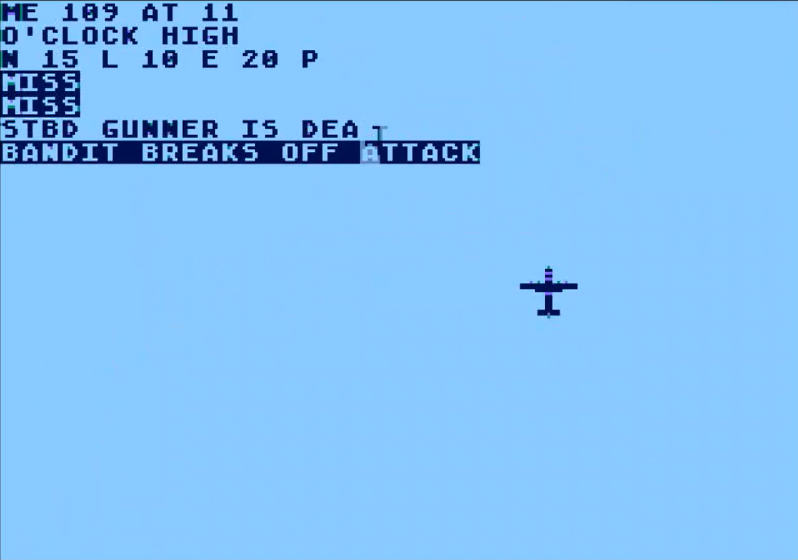
The mission continues, and I drop my payload above Bremen. Unfortunately, immediately after I start my journey home, my fuel tanks are punctured twice by enemy fighters. I start losing fuel fast – i have barely enough to reach England, and not enough to reach Turleigh…
… well, no problem. I am a level 45 pilot, and I can land my plane anywhere:
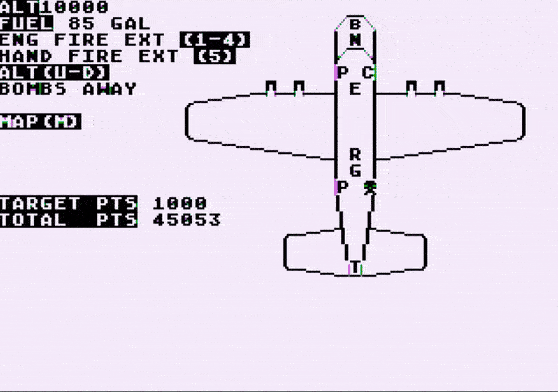
Mission 50: Meaulte
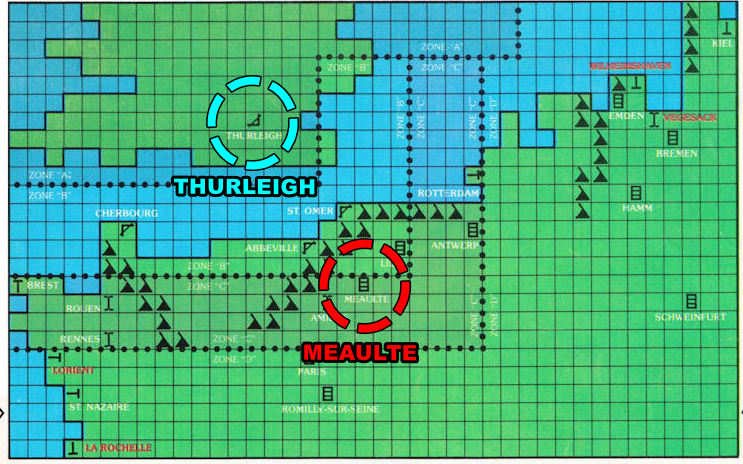
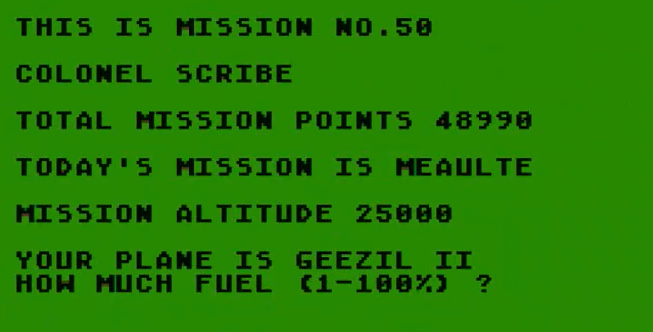
For the last mission, the target is Meaulte, which given what I had to go through in the last missions is pretty much another milk run. Porkbelly was grievously wounded in mission #46 toward Hamm, Vauban was killed, along with Porkbelly’s replacement, in a particularly harrowing mission above Vegesack (#47) – at least I received a medal for that one. Mission #48 should have been easy (Saint Nazaire), but I crashed at take-off, losing my bombardier and my plane. Mission #49 was another mission for Schweinfurt on a new plane (the Geezul II) except this time I reached the target and dropped my payload… and missed (only 47 points out of 1000 for target destruction).
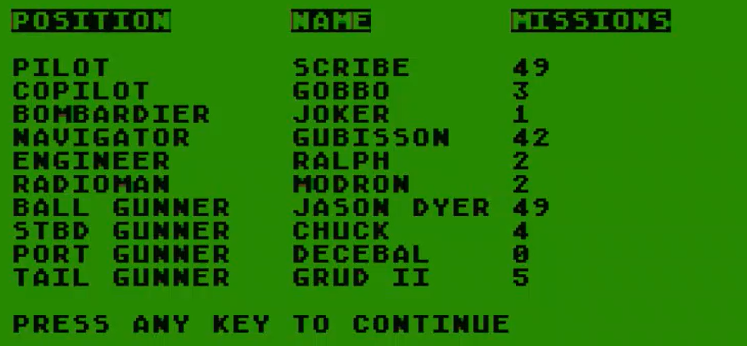
I have very little to say about mission #50: I took off, headed straight for my target and returned. Mission accomplished.
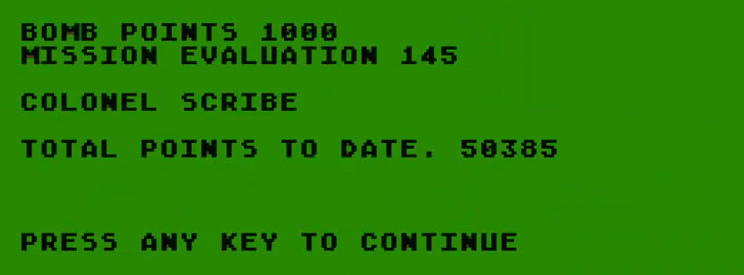
That’s the end of a beautiful career. I receive the magical cap, which gives me +4 in Saving Throw against Direct Orders and +40% Screen Time on any historical series by Steven Spielberg or Ken Burns.
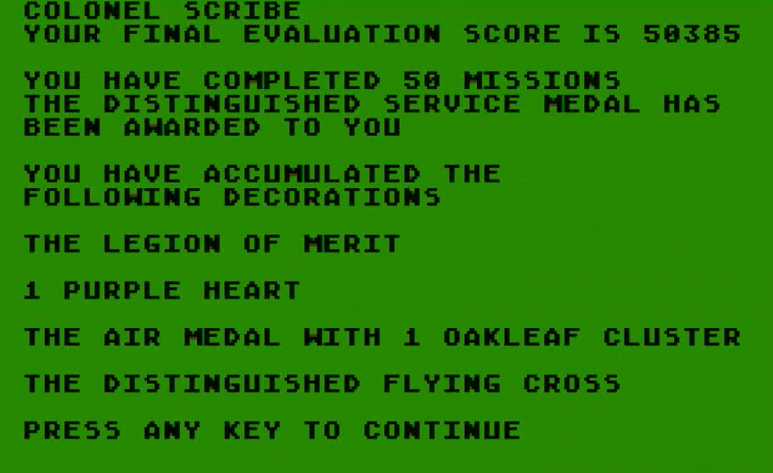
I was 5000 short of the rank of General (55 000 points), which gives you another special perk: a special Certificate of Achievement by SSI. According to Joel Billings, fewer than 20 players sent a photo and received one.

I was quite close, especially as I lost 2000 points due to two failed take-offs. The best method to be a general is probably to fly to the East of England after each successful mission and shoot down planes until either fuel or ammo runs out – these give extra points.
I had expected to die early and wrap up this AAR in maybe 3 days. It did not happen. Looking back, a large reason for my survival may be that I did not bother with calculating how much fuel I would take into missions – so I took an amount that felt safe, and had enough reserve to still fly with holes in my tanks and two engines dead.
I have another hypothesis, but someone would need to check the (BASIC) code of the game to prove it. Death seems to have mostly targeted the same positions (I went through maybe 6 or 7 Port Gunners during the campaign). I wonder whether getting experience alters the odds of being the person who dies when someone gotta die, like when a Me-110 is shooting at point blank or a flak shrapnel goes through the plane. If true, the difficult missions are the first ones – once the crew has its first deaths the new guys become the perfect redshirts to do the dying while the veterans thrive. If so, I was also lucky to have kept for most of the campaign the two most important gunners of the B-17, instead of, say, the radioman and the copilot.
Reviews & Ratings
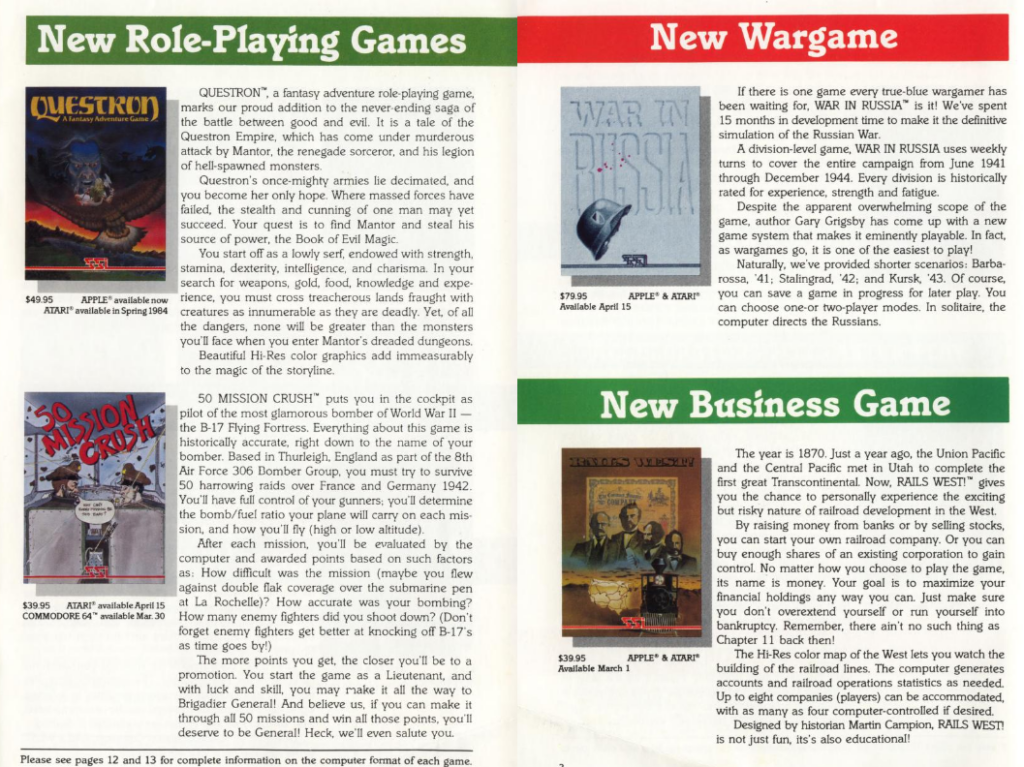
50 Mission Crush by John Gray, published by SSI, US
First release : May 1984 on Atari and Commodore 64
Average duration of a raid : 5 minutes
Total time played : 4 hours
Complexity: Trivial (0/5)
Final Rating: Totally obsolete
Ranking at the time of review: 119/129
Joel Billings, the founder of SSI, does not quite remember how 50 Mission Crush reached his desk, but the game had everything to be published quickly: SSI wanted to offer both “heavy” wargames and a more lightweight experience, and this game was perfect for the latter category. Furthermore, there was a market for the “B-17” management subgenre, as proven by the success of Avalon Hill’s 1981 boardgame B-17 Queen of the Skies. Designed for solitaire play and highly random, Queen of the Skies may have been John Gray’s inspiration, but if so he removed some of the most interesting choices this game had (particularly crew movements within the plane). It is also possible that the design for 50 Mission Crush came from Grey’s personal experience: he had been a flight engineer on heavy bombers during the Korean War, making him the oldest of all the programmers Billings worked with.
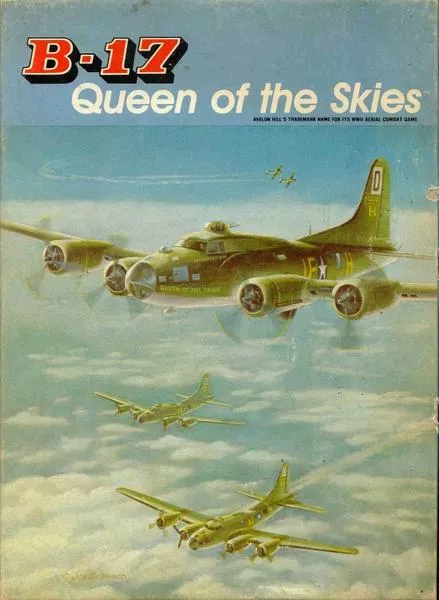
50 Mission Crush was released in April 1984 on Commodore 64 and Atari 8-bit at SSI’s low price-point of $39.95. It was released on Apple one month later, and finally on IBM PC in 1986.
A. Presentation: Terrible. The visuals are minimal and the game is not immersive at all. Where are the escort fighters? Where are the other bombers? Why are the Germans attacking one at a time? If I can name my crewmembers, why are those names never used again in the game?
The only good thing in this category is the 5-page essay “Lonely Fortress in the Sky” by Robert S. Billings (Joel’s father) about the life of strategic bomber crews. It is a great read, just like his contributions in earlier manuals (eg in Knights in the Desert).
B. UI, Clarity of rules and outcomes: Very poor.
C. Systems: Terrible. The only actions in the game are moving the aircraft and shooting at targets – the crewmembers are specialized and can’t replace another wounded crewman, and some are totally useless except for some hidden bonus only applicable in edge cases (eg: radioman when ditching).
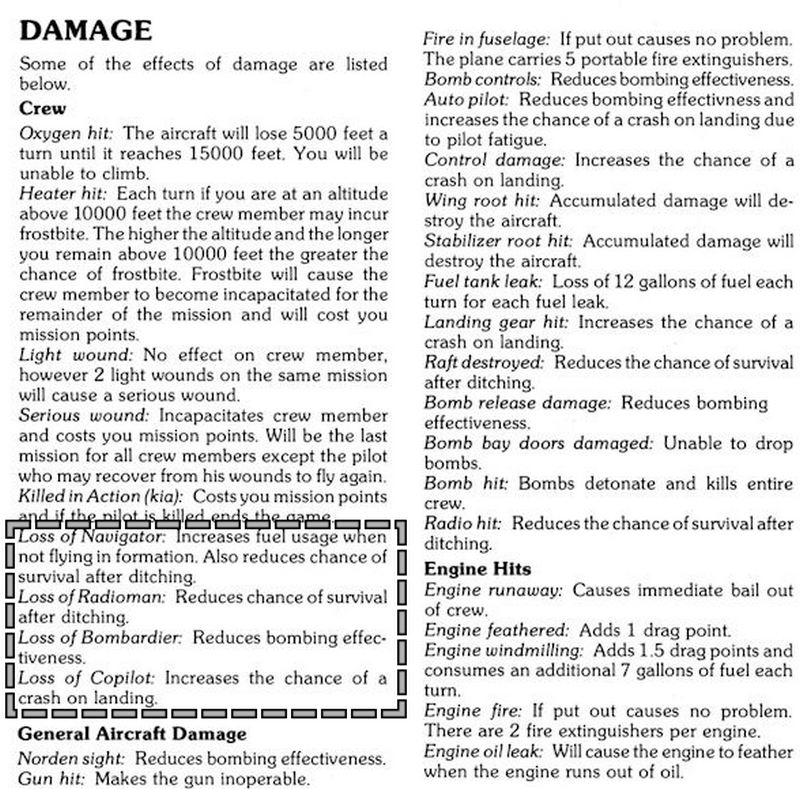
Despite being marketed as a role-playing game, there is no meta-game either. Nothing happens outside the missions. The only progression for your crew members is their experience (=number of missions), and the only upgrade for your B-17 is replacing the 30 cal. by 50 cal. At least, the effect of experience is felt for anyone manning a gun.
In terms of logic and except for the “Save” feature, this could have been a mainframe game.
D. Scenario design & balancing: Terrible. This type of game calls for controlled randomness in the adverse events that can affect the player, but 50 Mission Crush does not do that.
Did the game sacrifice scenario design for realism then? Alas, 50 Mission Crush does not feel realistic at all. Each tile you travel through is disconnected from the previous one: time does not pass (no morning, no evening), there is no weather pattern, your formation is exactly as efficient at the beginning and at the end of the mission, and provided you are at the correct altitude and do not have too much “drag” from combat damage you will always be considered in formation, even if you took an incredibly indirect route or went for a different target altogether.

E. Did I make interesting decisions: None. Officially, the game is about making decisions. In practice, in most missions the only decision taken is the fuel/bomb load arbitrage when taking off – so basically the level of risk. I don’t consider this one “interesting”.
Once you have taken off:
- There is an obvious route to the target. You don’t have a weather report and cloud cover is random, so you don’t get to choose between a direct route and a cloudy route,
- The best altitude is always the altitude that puts you in formation, as formation “cancels” some of the enemy fighter attacks,
- When attacked by fighters, there is no reason not to use the best guns as soon as possible. The game hints that you may want to conserve ammo by waiting for the enemy fighters to approach, but even on the longest missions I only ran out of ammo for some guns on the second half of the return trip – if you receive damage you want to receive it as late as possible in the mission anyway,
- There is a mini-decision when reaching the target on whether you want to dive below the cloud to bomb your target or just wait for the cloud to disappear by just passing time, but it is hardly exciting stuff.
There could have been an opportunity to make the game interactive when the plane is under attack, but all events are sequential: you resolve the air combats one after the other, then you put out fires if any, then you drop the bombS. You can’t be in a situation where, say, you need to allocate your crew between administrating first aid, dropping bombs and engaging 4 different fighters while there is a fire in the cabin. Instead, the player is left with only one other significant-ish decision: carry on or abort – and even then this only happens in the rare case where your plane has been badly mauled before you start the return trip – maybe once every 8 or 10 missions.
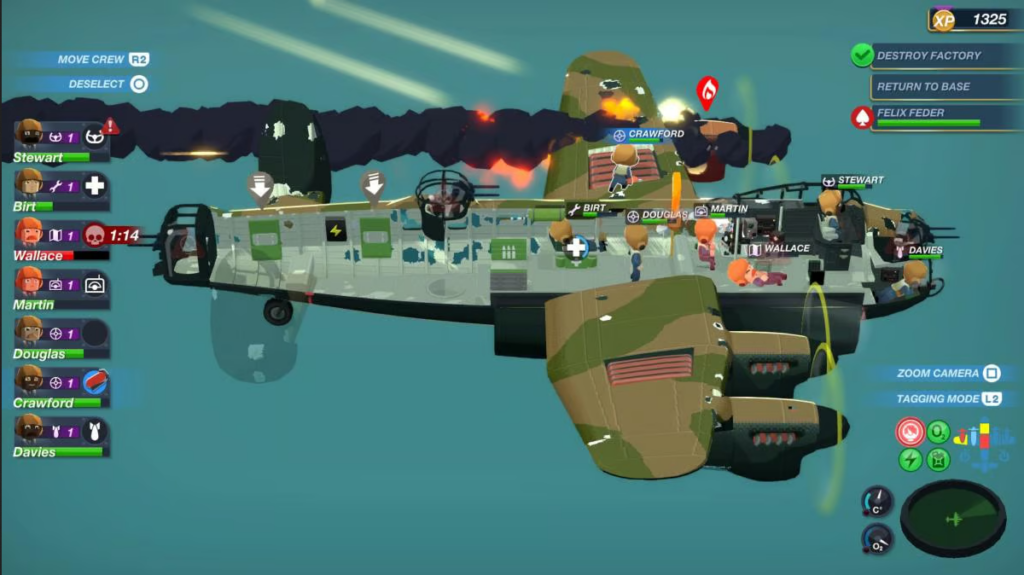
F. Final rating: Totally obsolete. This felt like playing with a Skinner box that’s out of food.
Reception
I reckon 50 Mission Crush is the first game since Legionnaire where I am the most disconnected from the reviews, and at least for Legionnaire I understood why. The game was popular with reviewers, even though they did not quite agree about its genre.
A good half of the reviews I read bought the RPG schtick. For instance, Rick Teverbaugh writing for Electronic Games in January 1985 introduces it as an “air battle role-playing game”, then states that “The crew becomes part of the family, much like other role-playing games.” and concludes with “forever might not be a bad description of how long 50 Mission Crush will be played by any and all wargame or roleplaying computer gamers who gather around your machine.” – the only mention of “wargame” in the whole review. Similarly, James Trunzo writing for Compute! in April 1985 describes the game as a “pseudo role-playing game” that “requires you to make numerous decisions“, with a list of cases that were non-decisions in my experience (eg “when to drop your payload“).
The Book of Apple Software dodges the issue of the genre by putting it in the “historical reenactment” category, but still rates it highly with an overall “B” (“It’s not the greatest game I’ve ever played, but it does have a certain appeal”). Similarly, Cheryl Peterson for Computer Power Play (October 1985) categorizes it as an outstanding simulation “requiring calculated decisions and a certain amount of guts”.
I am only partially vindicated by Karl Wiegers writing for Antic in May 1985. He categorizes it as a good operation-level war game, but one in which “random events play a larger role in your fate than do skill and practice“. Finally, Evan Brooks calls the game “Realistic but dull“, but still gives 2 stars to the game in his 1987 and 1991 lists of wargames, and 1 star and half in 1993!
The most interesting article on 50 Mission Crush is probably an article called “Fifty Mission Recall” by Leroy Newby, a former B-24 bombardier during World War II, shot down as it happens in his fiftieth mission. Newby compares his experience with Fifty Mission Crush with some of his own missions over Italy, Romania and Yugoslavia. It is a collection of solid anecdotes, including his final flight with the destruction of his plane (by friendly fire coming from another bomber!) and the tragic fate of some of the other crewmembers: “The wing blew up and I managed to open the bomb bay doors and get out. The pilot, co-pilot and radioman were pinned against their seats by the centrifugal force of the flat spin and could not escape.” I recommend reading it if you are interested by the theme.
50 Mission Crush was relatively successful, with more than 11 600 copies sold in the US, which you could see as either the worst-performing RPG released by SSI in 1984 (Questron sold 34 000 and Gemstone 51 000) or the most successful non-RPG released by SSI in 1984 (Imperium Galactum was second with 11 000 copies). SSI saw the glass half-full and 50 Mission Crush had a spiritual sequel in 1987: B-24 Liberator, also by Gray and with Newby serving as a technical advisor. It seems to add some spice to the stale formula, so maybe I will like that one more.